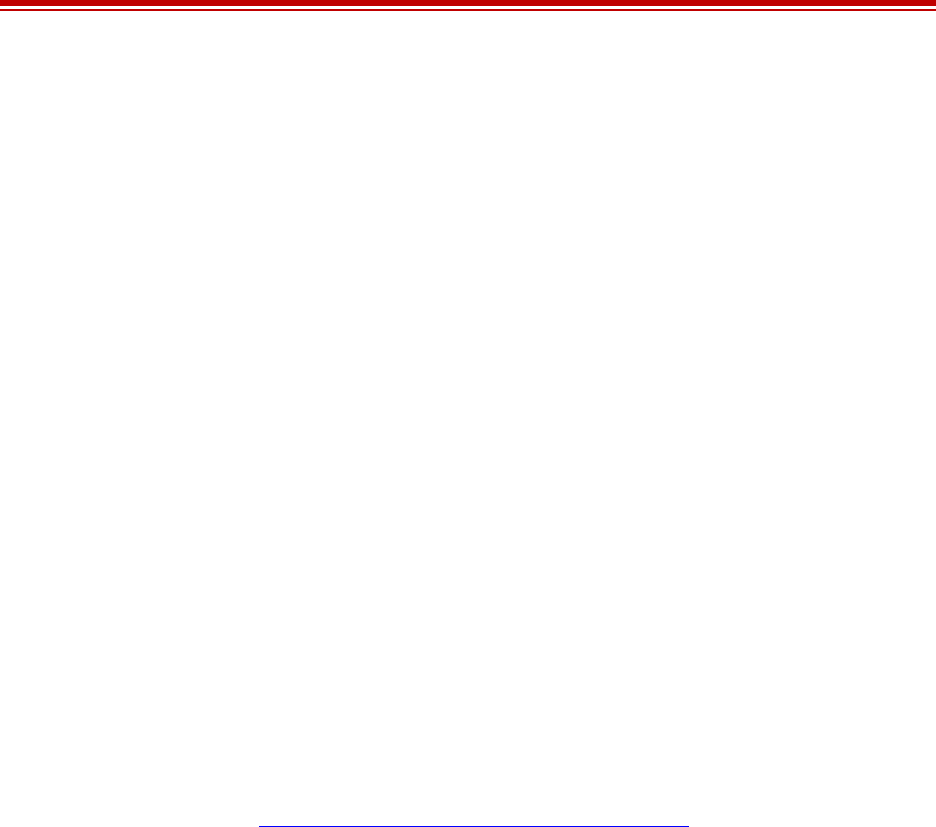User Manual
Table Of Contents
- ExtendAir® (TDD) Series Digital Microwave Radios Installation and Management Guide
- Legal Notice
- Open-Source License Information
- Table of Contents
- Notes for Customers of the Cisco Configuration ExtendAir r5005
- About this Document
- Introduction
- Pre-installation Tasks
- Link Engineering and Site Planning
- Familiarization with the ExtendAir (TDD) Series Radios
- Initial Configuration and Back-to-Back Bench Test
- Time Division Duplex (TDD) Factors
- Link Orientation and Synchronization
- Radio Synchronization
- Offset Timing
- Virtual Local Area Network (VLAN)
- Simple Network Management Protocol (SNMP)
- System Installation and Initiation Process
- Installation
- Configuration and Management
- Telnet into the Command Line Interface (CLI)
- Telnet
- Exalt Graphical User Interface (GUI)
- Quick Start
- Navigating the GUI
- Radio Information Page
- Administration Settings Page
- NTP and Time Zones Configurations Page
- Simple Network Management Protocol (SNMP) Configuration
- File Management Pages
- File Transfer Page
- File Activation Page
- System Configuration Page
- Ethernet Interface Configuration Page
- T1/E1 Configuration Pages
- VLAN Configuration Page
- Ethernet Rate Limiting
- QoS Configuration Page
- Automatic Channel Selection (ACS) Page
- Syslog Configuration Page
- GPS Information Page
- Alarms Page
- Performance Page
- Event Log Page
- User Throughput Page
- Diagnostic Charts Page
- Spectrum Analyzer Page
- Ethernet Utilization Page
- Reboot Page
- Manual Page
- Specifications
- Interface Connections
- Antennas
- Troubleshooting
- Back-to-back Bench Testing
- General Compliance and Safety
- Dynamic Frequency Selection
- Safety Notices
- Regulatory Notices
- Regulatory Compliance
- EIRP Limits for the United States and Canada
- EIRP Limits for Australia
- EIRP Limits for the European Union and ITU Countries
- Declaration of Conformity to the R&TTE Directive 1999/5/EC
- Exalt Limited Hardware Warranty Software License and RMA Procedures Agreement
- Copyright Notices
- Index

Exalt Installation and Management Guide
ExtendAir (TDD) Series Digital Microwave Radios
203591-011 111
2013-02-22
Notes:
1 The devices subject to these requirements can select the initial channel for operation to avoid
TDWRs and apply the Uniform Channel Spreading requirements (see FCC 06-96 in ET Docket
03-122 released June 30, 2006) on the remaining available frequency band of operation. All the
other test procedures including the test radar patterns remain the same at the present time. A
revision to the measurement procedure with modification to the Uniform Channel Spreading
requirement and other changes will be released in the future. The Commission will also address
the issue of any field upgrade option at that time.
2 The grantee must identify the specific expertise and the training required by the installers for
installing these types of devices.
3 In some instances it is possible that a device may be within 35km of multiple TDWRs. In this case
the device must ensure that it avoids operation within 30 MHz for each of the TDWRs. This
requirement applies even if the master is outside the 35km radius but communicates with outdoor
clients which may be within the 35km radius of the TDWRs.
4 The requirement for ensuring 30 MHz frequency separation is based on the best information
available to date. If interference is not eliminated, a distance limitation based on line-of-sight from
TDWR must be used. In addition, devices with bandwidths greater than 20 MHz may require
greater frequency separation.
5 Devices may be optionally designed not to transmit on channels which overlap 5570–5680 MHz
instead of requiring installers to perform site-by-site adjustments. In that case it is still required
that the devices should be installed professionally and the procedures for registering the device in
the industry database should be included in the users manual.
6 A voluntary WISPA-sponsored database allows operators and installers to register the location
information of the UNII devices operating outdoors in the 5470–5725 MHz band within 35km of
any TDWR location (see http://www.spectrumbridge.com/udia/home.aspx
). This database may be
used by government agencies to expedite resolution of any interference to TDWRs.










